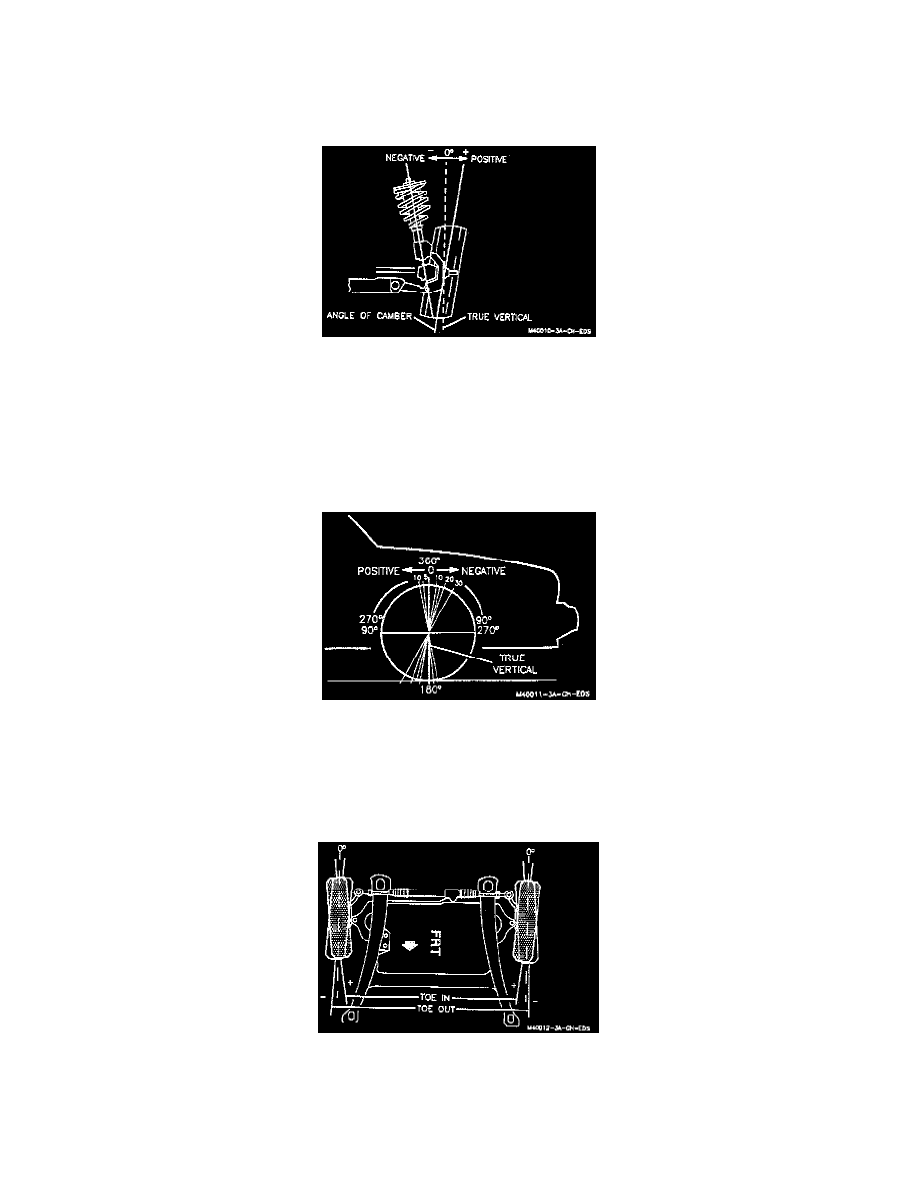LSS V6-3.8L VIN K (1997)

Alignment: Description and Operation
Definition of Terms
Camber
Camber is the inward or outward tilting of the front or rear wheels from the vertical. When the wheels tilt outward at the top the camber is "positive" and
when they tilt inward at the top the camber is "negative." The amount of tilt is measured in degrees from the vertical and this measurement is called the
camber angle.
An excessive positive camber will cause outside shoulder wear on tires; an excessive negative camber will cause inside shoulder wear. Excessive camber
will also cause the vehicle to pull or lead to the side having the most positive camber.
Caster
Caster is the tilting of the front steering axis, either forward or backward from the vertical. A backward tilt is "positive," and a forward tilt is "negative."
If one wheel has more positive caster than the other, it will cause the wheel to pull toward the center of the vehicle. This will cause the vehicle to move
or lead toward the side with the least positive caster.
Caster influences directional control of the steering, but does not affect tire wear. Weak springs or overloads will affect caster.
Toe-In
Toe is a measurement of how much the front or rear of the wheels are turned in or out from a straight-ahead position. When the wheels are turned in, toe
is "positive," and when they are turned out, it is "negative." The actual amount of toe is normally only a fraction of a degree.
Toe functions to ensure that the wheels roll parallel. It also serves to offset the small deflections of the wheel support system that occur when the vehicle
is rolling forward. Even though the wheels are set to toe-in slightly when the vehicle is standing still, with the proper toe they will tend to roll parallel on
